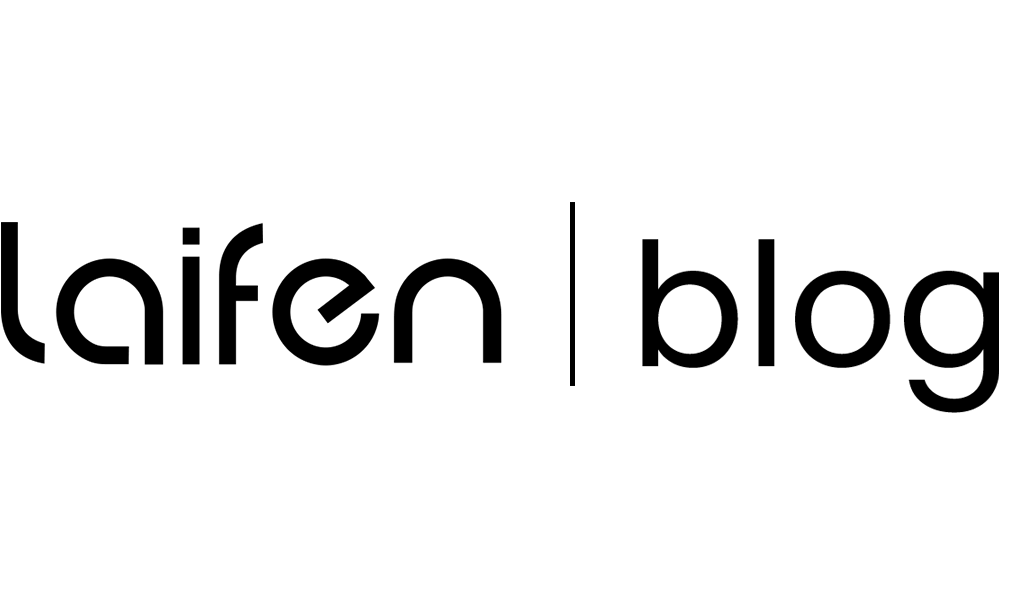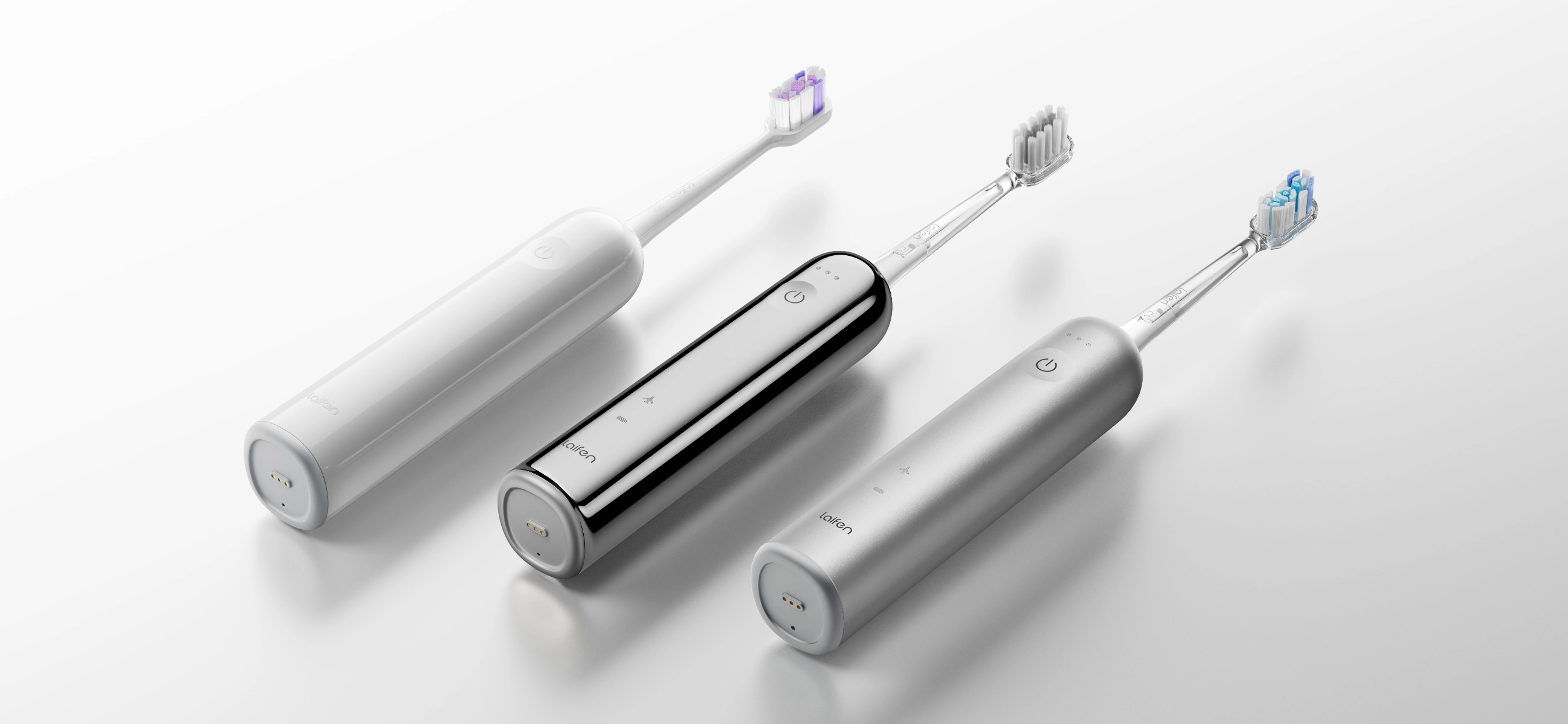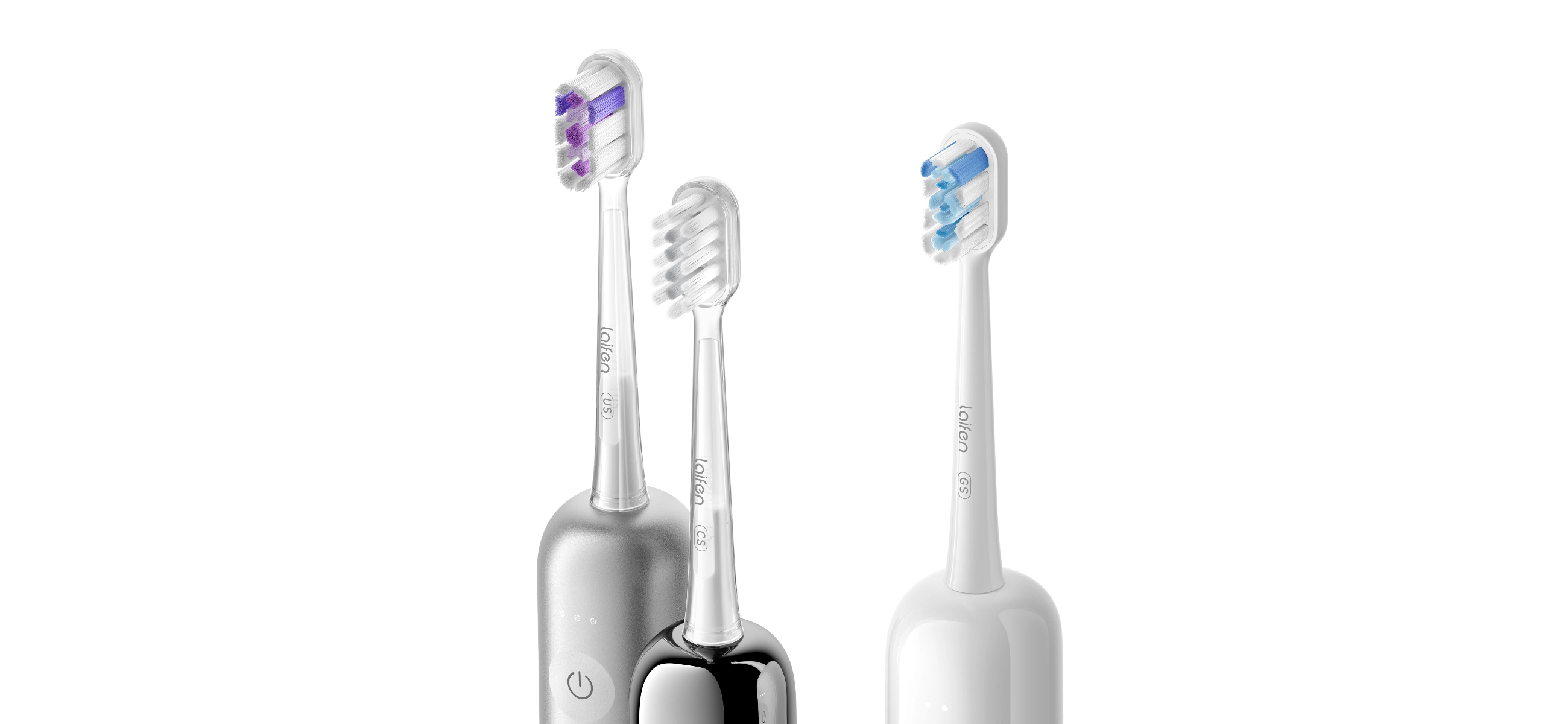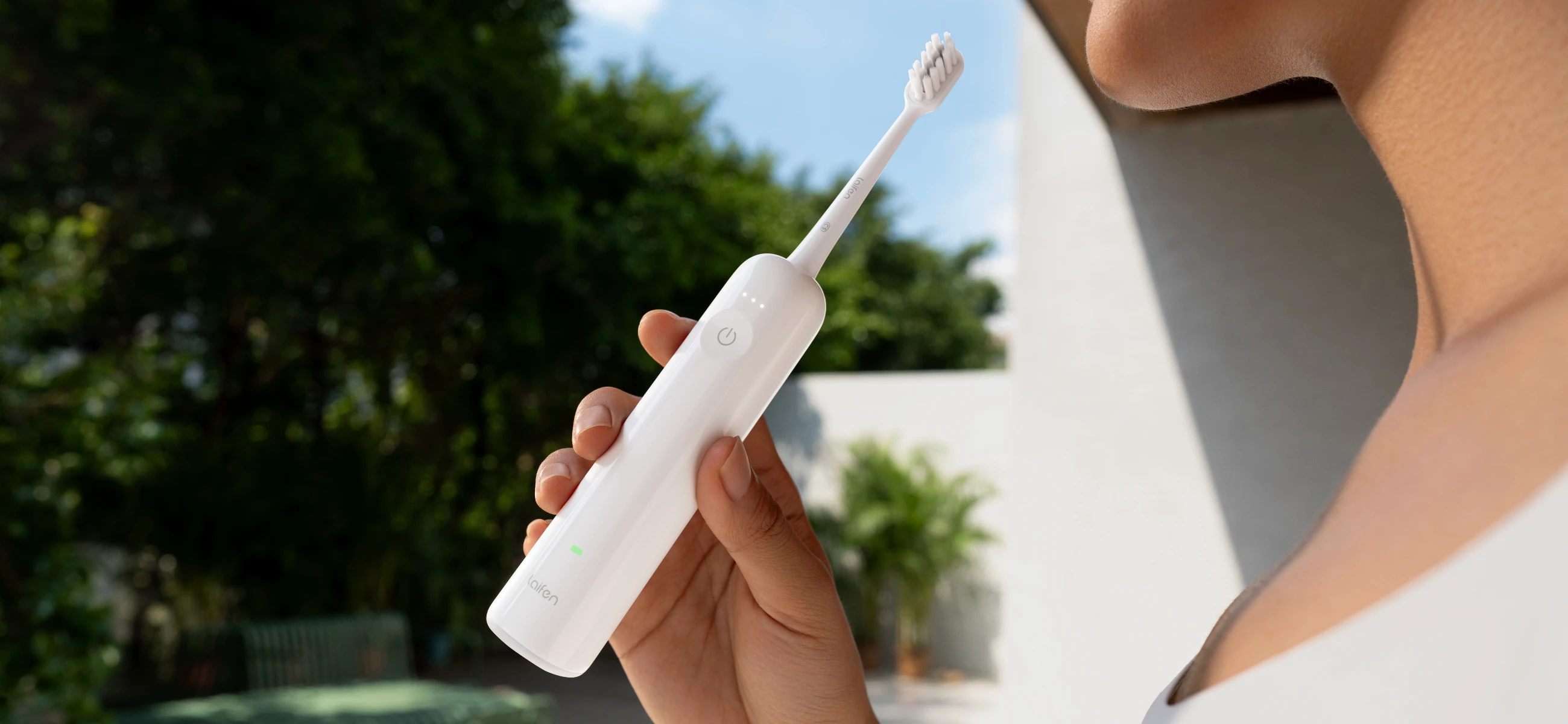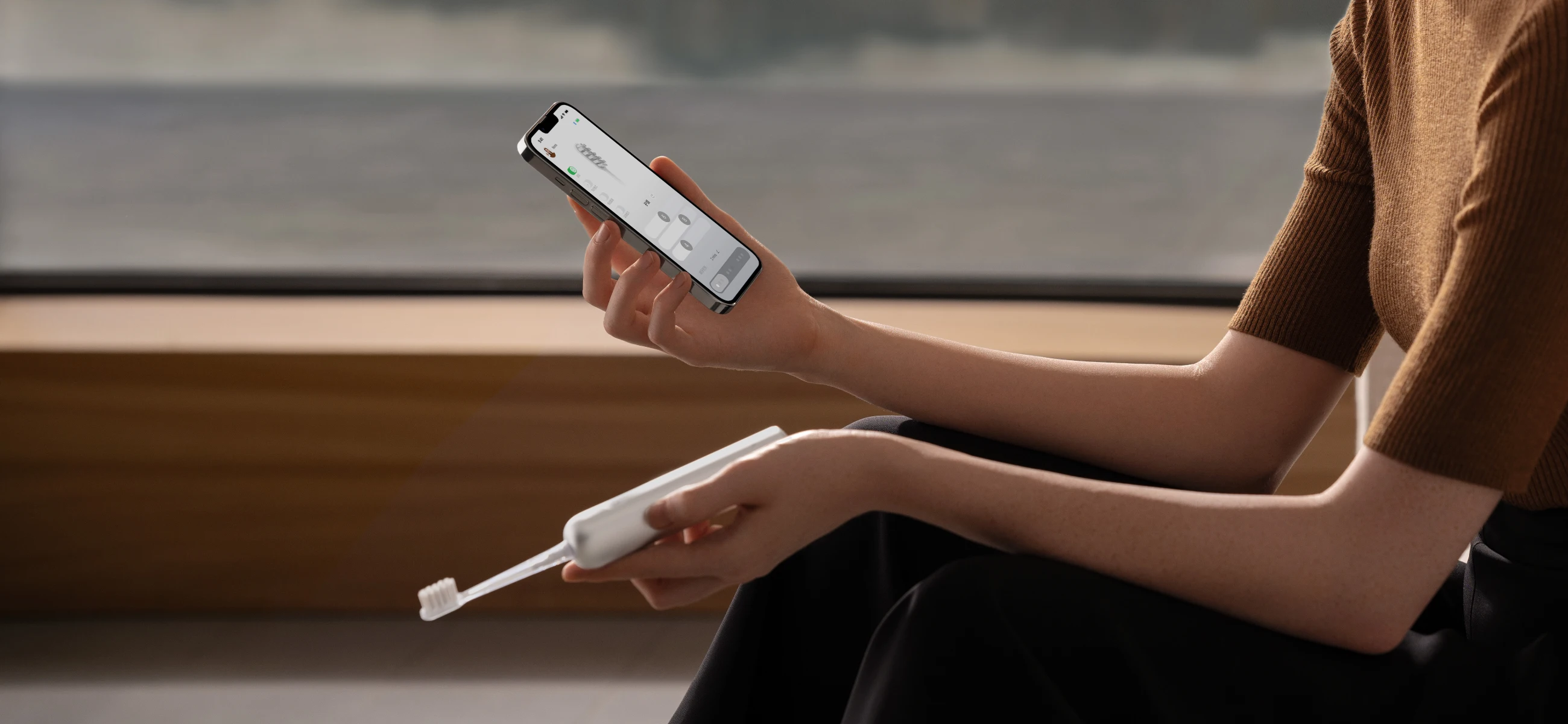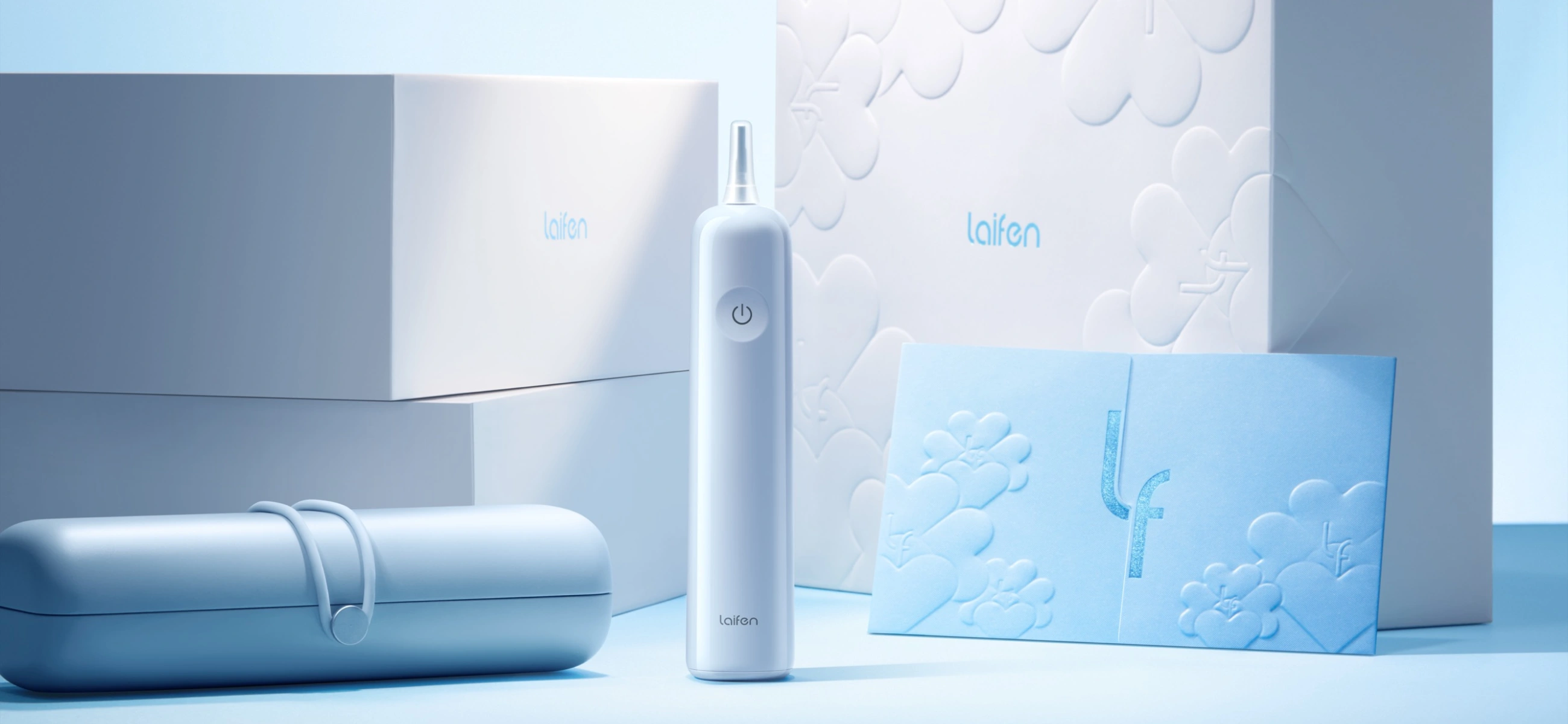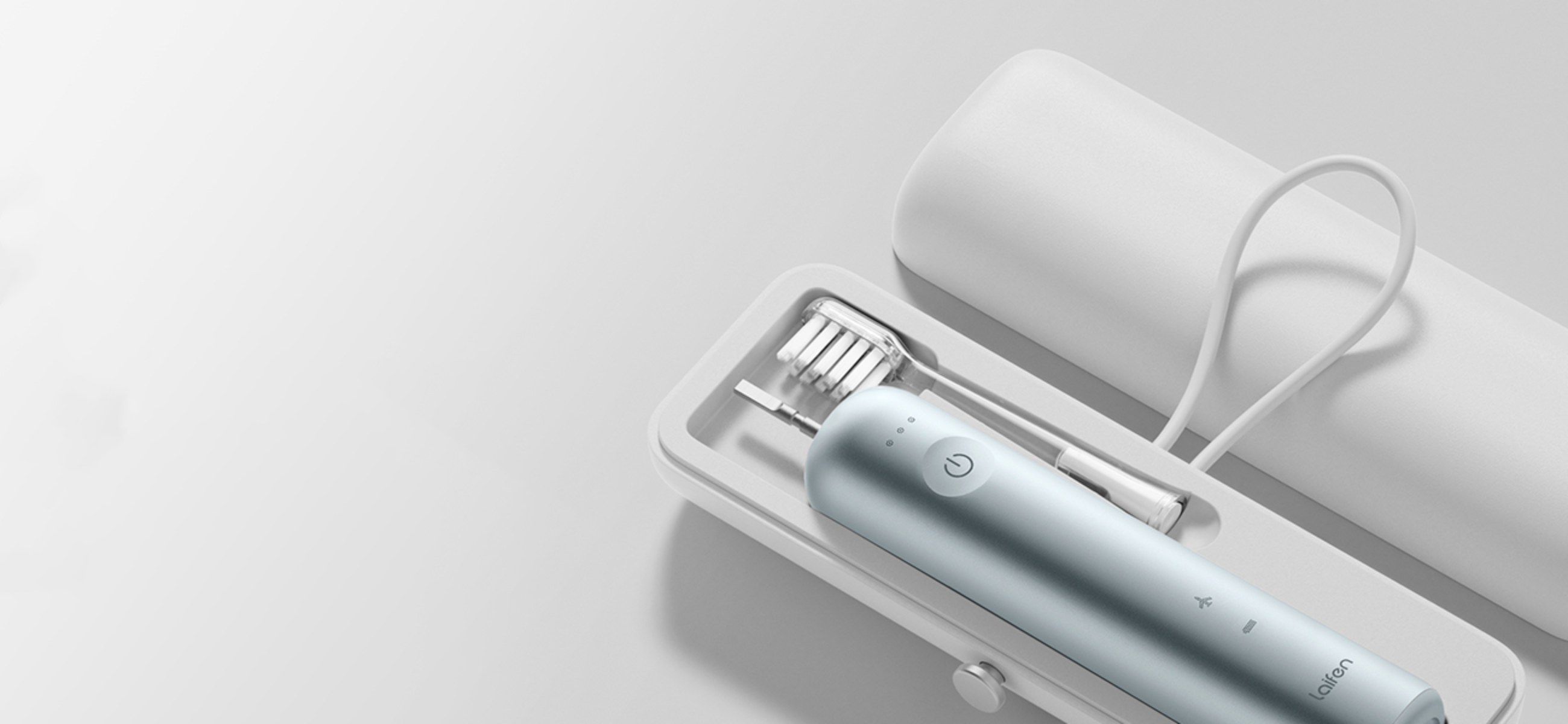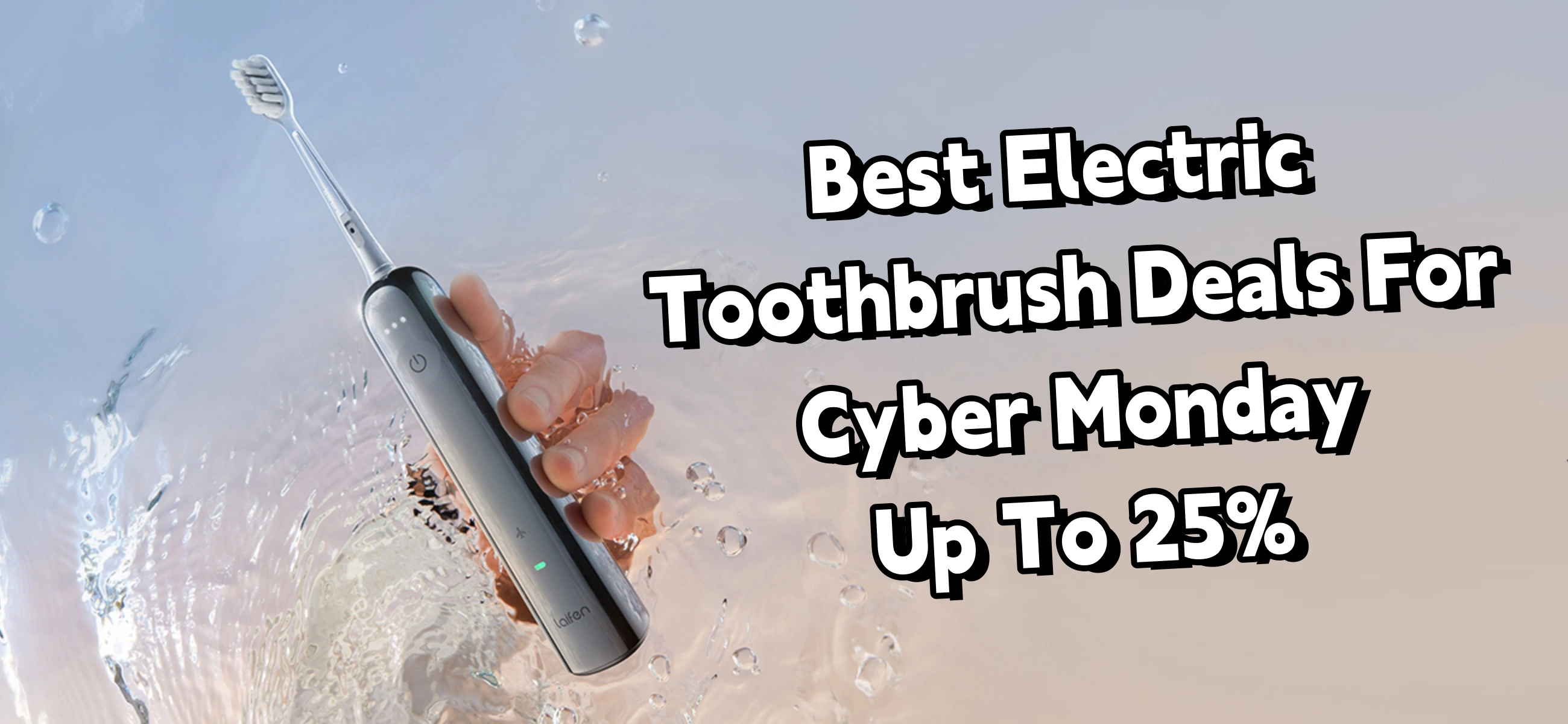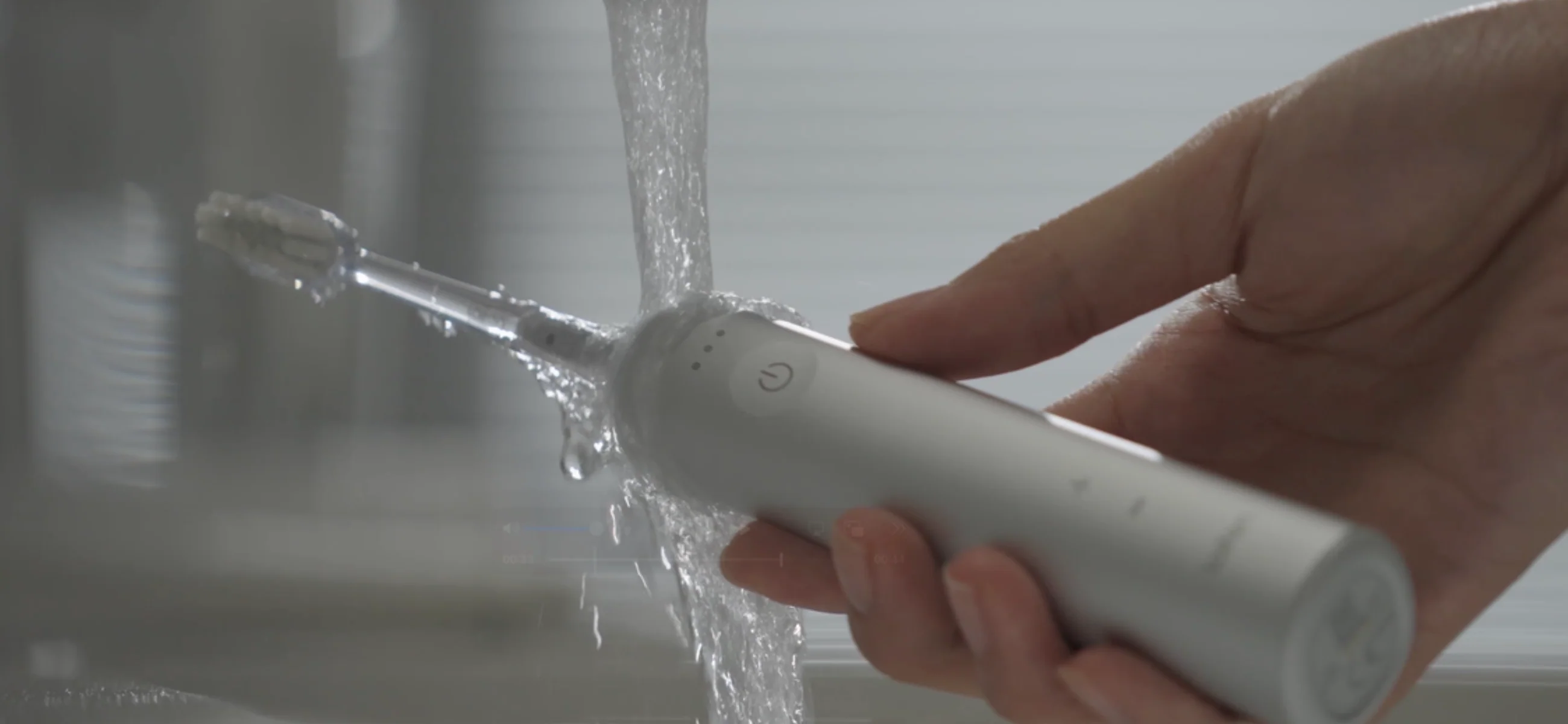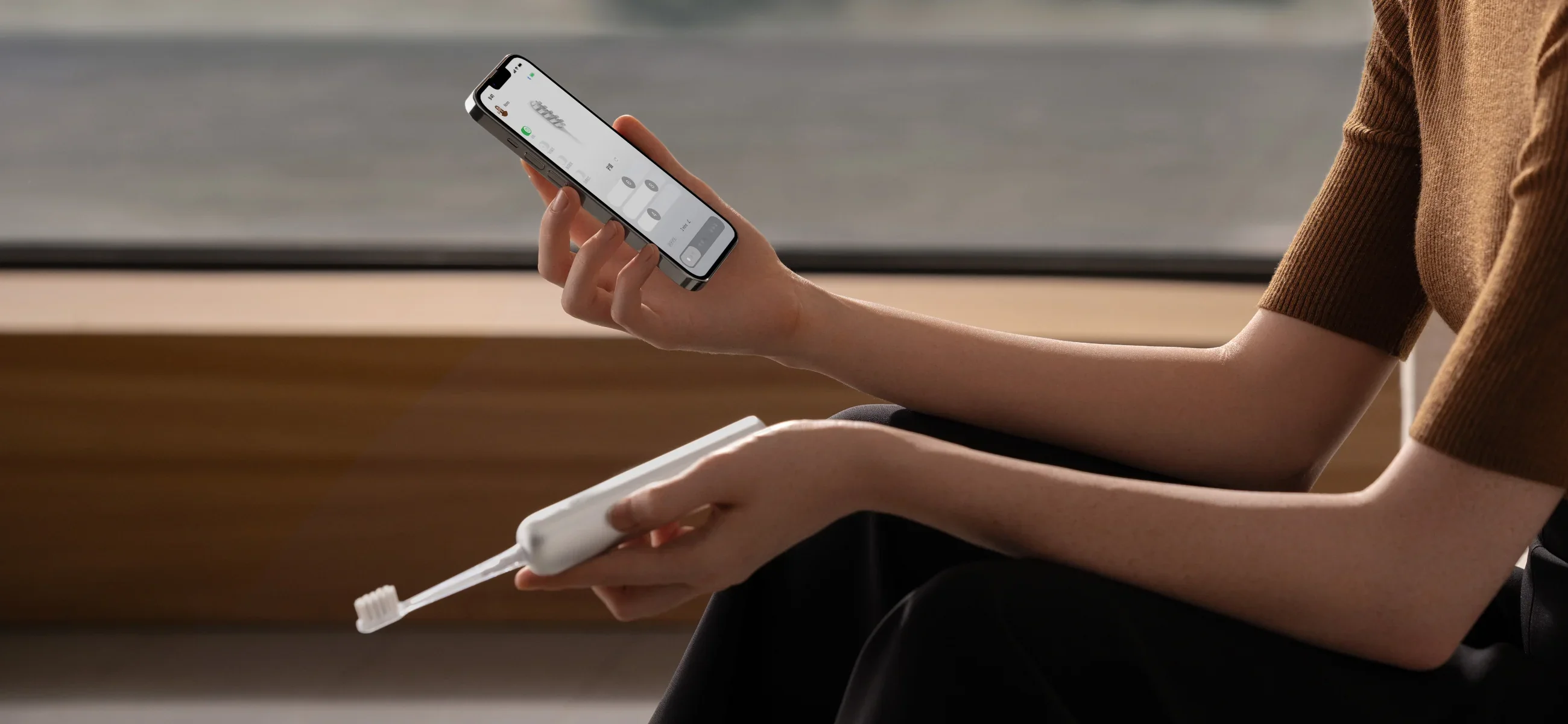The debate between electric and manual toothbrushes has been buzzing for a while, and while both have their pros and cons, it’s undeniable that electric toothbrushes are trending. With their high-tech features and efficient cleaning capabilities, they’re becoming a favorite for many.
However, the real question isn’t just which one is better overall, but which one is better for you. Everyone’s dental needs are different, so matching your specific needs to the right type of toothbrush is key.
Many people find themselves puzzled over this choice, and that’s okay. The purpose of this article is to help you navigate through the options and find the toothbrush that truly fits your lifestyle and dental health requirements.
Advantages of an electric toothbrush over a manual
Here’s a quick review of the advantages of an electric toothbrush over a manual one:
- Superior plaque removal: Electric toothbrushes like Laifen Wave can remove more plaque than manual brushes due to their consistent, powerful oscillating and rotating movements.
- Ease of use: Electric toothbrushes require less manual effort and makes themselves especially beneficial for people with limited mobility, such as those with arthritis.
- Built-in timers: Many electric toothbrushes come with timers to help you brush for the recommended two minutes, so you can adopt good brushing habits.
- Enhanced cleaning modes: Electric toothbrushes often offer various cleaning modes like whitening, gum care, and sensitivity.
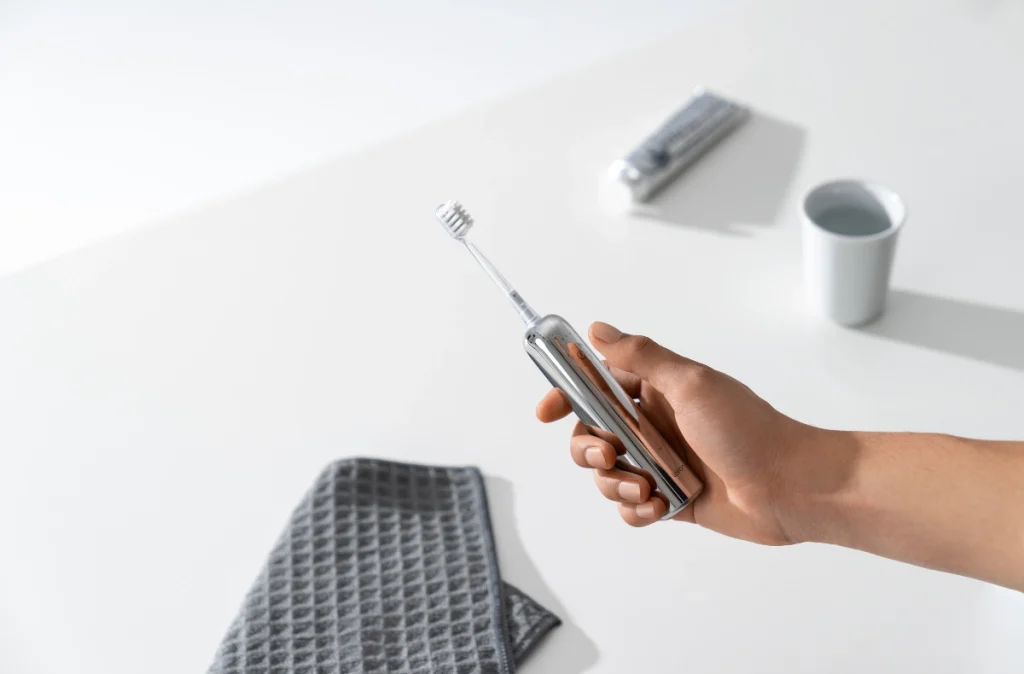
- Engagement and motivation: Features like Bluetooth connectivity, brushing apps, and fun designs can make brushing more engaging, especially for kids.
Do dentists really recommend electric toothbrushes?
Absolutely, many dentists recommend electric toothbrushes for their superior cleaning efficiency and ease of use. Clinical studies have demonstrated that electric toothbrushes, particularly those with oscillating and rotating heads, outperform manual toothbrushes in maintaining oral hygiene. The consistent and automated brushing action comes with thorough cleaning of teeth and gums, so users will have a better overall dental health.
Electric toothbrushes often include interactive features, such as smartphone apps and Bluetooth connectivity, which engage users and promote better brushing techniques. These innovative tools are especially beneficial for younger patients, encouraging them to develop and maintain good dental cleaning practices from an early age.
When to switch to an electric toothbrush?
Switching to an electric toothbrush can be beneficial for many reasons, and certain signs and circumstances can indicate it’s time to make the change:
- Difficulty with manual brushing: If you find manual brushing challenging due to limited dexterity, arthritis, or other physical conditions, an electric toothbrush can make brushing easier and more effective.
- Inconsistent brushing habits: If you’re not brushing for the recommended two minutes or missing areas of your mouth, the built-in timers and consistent motion of electric toothbrushes can help improve your technique.
- Gum issues or sensitivity: If you’re experiencing gum recession, sensitivity, or bleeding, an electric toothbrush with pressure sensors and gentle modes can help protect your gums and improve your oral health.
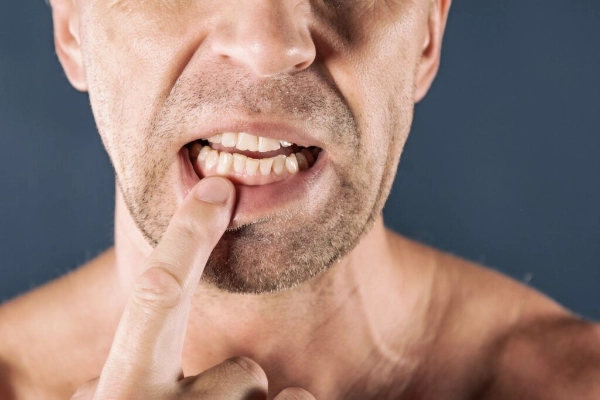
- Orthodontic appliances: If you have braces, retainers, or other orthodontic appliances, an electric toothbrush can clean around these structures more effectively than a manual toothbrush. Read up to the best electric toothbrushes for braces.
- Desire for better plaque removal: If your dentist has indicated that plaque buildup is an issue, an electric toothbrush can help remove plaque more efficiently.
Why do you need to know which is better?
People are curious about whether an electric toothbrush is better than a manual one because they’re looking to make informed decisions about their oral health. With so many options available, it’s natural to want to know which toothbrush will provide the best cleaning and ultimately prevent issues like cavities, gum disease, and plaque buildup.
Meanwhile, the rise of technology in everyday life has led to increased interest in how modern tools, like electric toothbrushes, compare to traditional methods. People include you and I want to understand the benefits, such as improved brushing techniques, timers, and pressure sensors, that electric toothbrushes offer compared to the simplicity, control, and affordability of manual toothbrushes.
Explore different types of toothbrushes
Below are the types of toothbrushes. You can browse and compare their differences, and then choose the type of toothbrush that suits you.
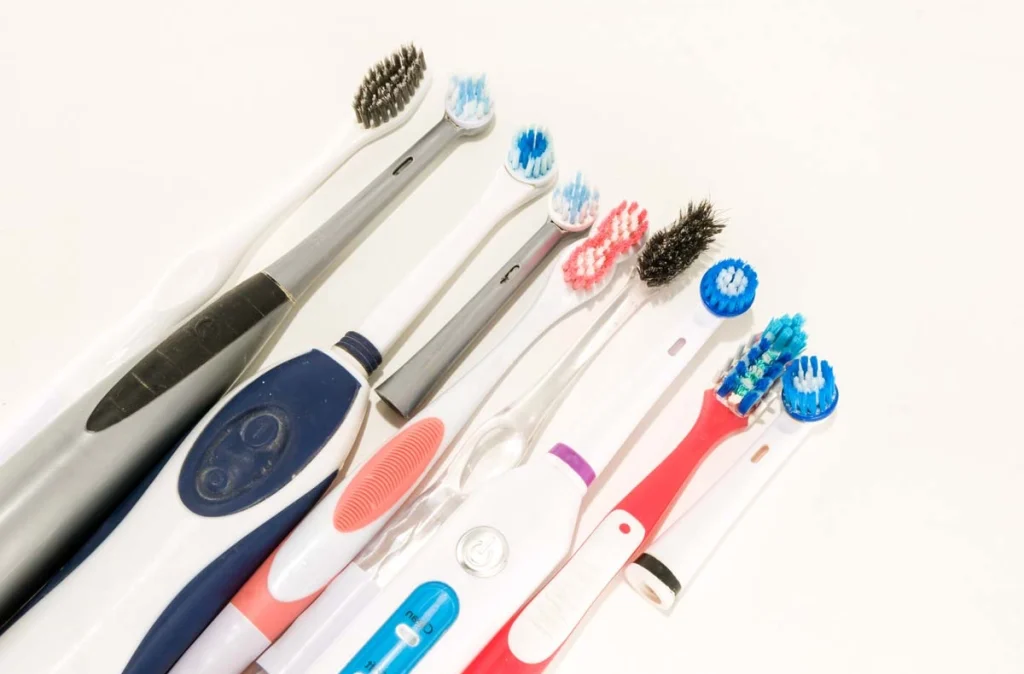
| Toothbrush type | Features | Benefits | Recommended users |
| Manual toothbrush | Simple design, various bristle types, easily accessible | Affordable, easy to use, widely available | Anyone, budget-conscious users |
| Electric toothbrush | Oscillating/rotating/vibrating bristles, rechargeable, built-in timers | Superior cleaning, convenience, advanced features | Those seeking better plaque removal, tech-savvy users |
| Sonic toothbrush | High-speed vibrations, produces fluid dynamics | Deep clean, gentle on gums, effective at plaque removal | People with sensitive gums, those looking for advanced cleaning |
| Ultrasonic toothbrush | Extremely high-frequency vibrations, non-mechanical cleaning action | Cleans below the gum line, great for periodontal care | Users with gum disease, those requiring extra gentle care |
| Interdental brush | Small, cylindrical brush for cleaning between teeth | Targets hard-to-reach areas, great for braces and implants | People with braces, bridges, or tight spaces between teeth |
| Folding toothbrush | Compact, foldable design, travel-friendly | Portable, hygienic storage, convenient for travel | Frequent travelers, on-the-go users |
| Eco-friendly toothbrush | Bamboo or recycled materials, biodegradable | Environmentally friendly, reduces plastic waste | Eco-conscious users |
| Kids’ toothbrush | Smaller head, softer bristles, fun designs | Gentle on kids’ gums, encourages good brushing habits | Young children, parents teaching oral hygiene |
A popular question: Do electric toothbrushes clean better?
Electric toothbrushes clean better because they offer a higher degree of oral cleanliness through several key features.
- Firstly, their consistent and rapid oscillating, rotating, or vibrating motions can remove plaque more effectively than the manual brushing motion. This mechanical action helps to break down and sweep away food particles and plaque from teeth surfaces and gum lines that are often missed with manual brushing.
- Secondly, the built-in timers on electric toothbrushes can let you brush for the full two minutes recommended by dentists, which can be easy to cut short with a manual toothbrush. This extended brushing time allows for a more thorough cleaning.
- Many electric toothbrushes also come with multiple toothbrush heads, such as deep clean, whitening, and gum care, which can be tailored to target specific dental concerns, providing a more comprehensive cleaning experience.
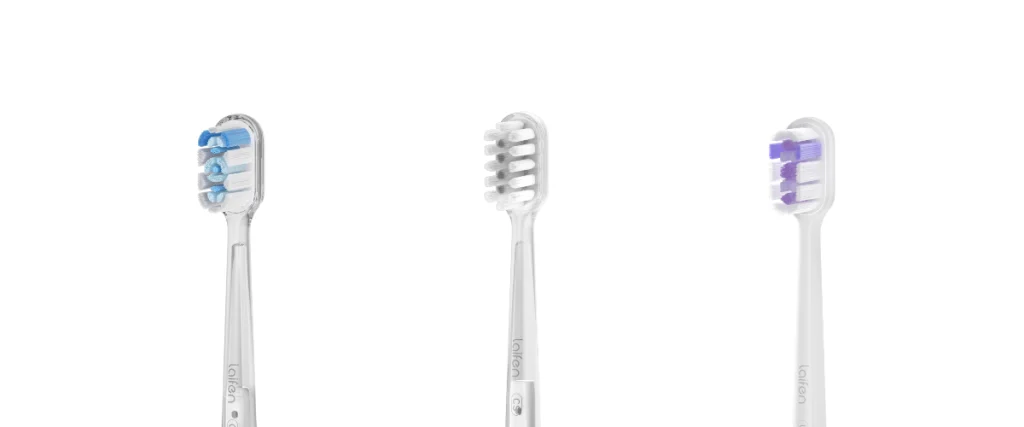
Disadvantage of using an electric toothbrush
While electric toothbrushes offer many advantages, they also come with a few disadvantages:
- Cost: Electric toothbrushes are more expensive than manual ones. The initial purchase price, along with the cost of replacement brush heads, can add up over time.
- Battery dependence: Electric toothbrushes require batteries or charging. If you forget to charge it or the batteries run out, you might be left without a functioning toothbrush when you need it.
- Bulky design: Electric toothbrushes are bulkier and heavier than manual toothbrushes, which can make them less convenient for travel or for people with limited storage space. Laifen Wave is smaller and more lightweight for travel use.
- Noise: Although many models are designed to be quiet, electric toothbrushes still produce some noise during operation, which might be bothersome to some users, especially in quiet environments. Lefen Wave solves the noise problem, so you won’t feel strong vibrations and unbearable noise when brushing your teeth with Wave.
- Maintenance: Electric toothbrushes require more maintenance, such as regular charging and ensuring the brush heads are replaced timely. Neglecting these aspects can reduce their effectiveness and lifespan.
Never miss the correct tooth brushing techniques!
Here are some key tips for correct tooth brushing techniques:
- Hold your toothbrush at a 45-degree angle to your gums. This angle helps to clean the gum line, where plaque often accumulates.
- Use gentle, circular motions rather than aggressive back-and-forth scrubbing. This technique is more effective at removing plaque and is gentler on your gums.
- Brush all surfaces of your teeth – the outer surfaces, the inner surfaces, and the chewing surfaces. Don’t forget to brush your tongue as well to remove bacteria and keep your breath fresh.
- Spend at least 2 minutes brushing your teeth, dividing the time equally among the four quadrants of your mouth. Many electric toothbrushes come with built-in timers to help you stay on track.
- Replace your toothbrush or brush head every three to four months, or sooner if the bristles are frayed. Worn bristles can’t clean as effectively and may harm your gums.
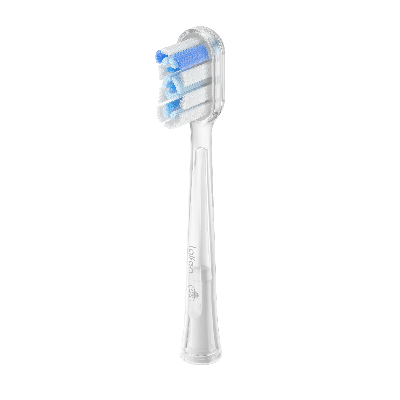
FAQs
Q1: Are electric toothbrushes better for braces?
Yes, electric toothbrushes are better for braces. The oscillating and vibrating bristles of electric toothbrushes like Laifen Wave can clean around brackets and wires, removing plaque and food particles that are often difficult to reach with a manual toothbrush.
Q2: Are electric toothbrushes better for receding gums?
Electric toothbrushes can be better for receding gums, but it’s important to use one with a gentle setting or a mode designed for sensitive gums. Use the Gum Care replacement toothbrush head of Laifen Wave to care for your gums.
Q3: Are electric toothbrushes better for whitening?
Electric toothbrushes are often better for whitening because they can remove surface stains more effectively than manual toothbrushes. You can try the Ultra Whitening brush head of Laifen Wave and adjust the oscillation and vibration settings into a higher level if you want to whiten to your teeth when brushing.
Q4: Which electric toothbrush is better? And why?
When it comes to choosing an electric toothbrush, the Laifen Wave stands out due to its advanced oscillation and vibration technology. The Laifen Wave’s oscillating and vibrating bristles help do a deep and thorough clean.
Its gentle settings make it suitable for people with sensitive gums or receding gums, and its whitening mode helps in achieving a brighter smile.
The combination of powerful cleaning action, gentle care, and specialized modes makes Wave a superior choice for those seeking an all-around excellent electric toothbrush.
